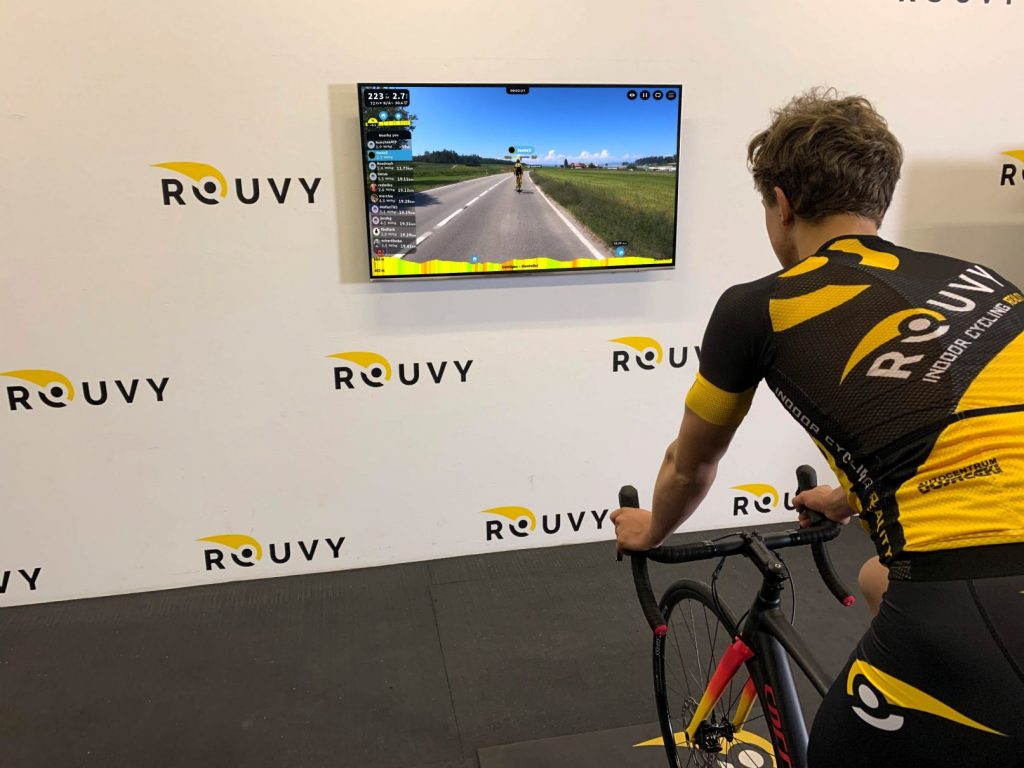Get a bike trainer
You have several options when it comes to the most important piece of equipment. Turbo trainers are the cheapest one. You can get them for less than 30 euros, and they will do the job. If you invest a little more, you can get a direct-drive turbo trainer that will give you a much more realistic and quiet experience. The most expensive smart turbo trainers will even allow you to connect to virtual training platforms. That’s a big deal but more about those later.
https://www.instagram.com/p/CCoYAaShvZf/?utm_source=ig_web_copy_link
Your second option are rollers. They offer the most realistic ride because you have to balance your bike on top of them. Your bike is not fixed in place as with turbo trainers. On average, rollers are also cheaper than turbo trainers. The more expensive models can be connected to virtual platforms too. The downside is that rollers take some getting used to, they aren’t that newbie-friendly.
Your last option is smart bikes. These bikes are made entirely for home training. They offer the most realistic cycling experience, connect to virtual platforms, and allow you to measure and track every possible metric. Their biggest disadvantage is that they are really expensive.
Create a pain cave
Now that you have your trainer, you need to choose a good spot for it. Most of all, you want good airflow because there’s no wind indoors and you will get sweaty! It’s ok if you can’t place your training setup next to a window, just invest in an extra fan. Pros often use at least two fans to keep themselves cool during gruelling indoor rides.

No matter the number of fans, you will sweat. That’s what pain caves are for. You should consider protecting your floor and bike from those salty drips. We recommend putting a towel under your bike and on your handlebars.
A good stand or a small desk next to your bike will be really useful. You can store some snacks, extra water, a fan, and a monitor for entertainment or virtual platforms on it. And lastly, don’t underestimate your clothing. Stationary riding means that any chafing you experience will be that much worse because you won’t move around on the bike like outdoors. Getting into your regular cycling clothes will also help you get in the mood for riding.
https://www.instagram.com/p/B_NRib0Fn7h/
Choose a virtual training platform
Training at home doesn’t have to be about staring at a blank wall or distracting yourself with a movie. You can level up the whole experience with a virtual training platform. It will allow you to socialize with others while training at home, gamify your sessions, and explore new exotic routes around the world. But most of all, it will help you immerse in the act of cycling so you might even forget you’re indoors.
There are many available platforms to choose from that will facilitate this experience. Zwift, Rouvy, Sufferfest, TrainerRoad, FulGaz, Tacx, or Road Grand Tours are some of the more popular ones. If you’re looking to get started, then Rouvy offers the best value for money. It only costs €10 per month, and each membership includes “Family sharing”, which gives you two more memberships attached to your main one for free. It is probably the best all-around indoor training app. The most appealing feature is its augmented reality routes. It takes a video of an actual real-world route and overlay your virtual self onto it. This way you can experience over 2500 routes from all around the world.

Reduce your training time
Now that you have your pain cave and your virtual training setup, it’s time to decide on your training plan. The biggest difference is that one hour of training indoors equals to one hour of pedalling. Outdoors, you usually spend 10-15% of your time coasting at 0 watts because of downhills, traffic, and other distractions. Thankfully, training indoors is not only more intense, it’s also more effective. A good rule of thumb is to halve your usual training time to get the same training effect as outdoors.
Stick to two hard sessions a week
You will see that indoor training sessions are very demanding on your legs and your nervous system. That’s because of the no-freewheeling and static style of cycling. It’s important not to overdo it until you gain experience. Start with a maximum of 2 intense sessions per week and have 1-2 days in between when you rest, do an easy spin for 20 minutes or some cross training. If you’re looking for inspiration, try the Vuelta Fan Series powered by Rouvy. There’s no better way to test your new indoor cycling setup than joining in a Grand Tour stage with the rest of the cycling world.





